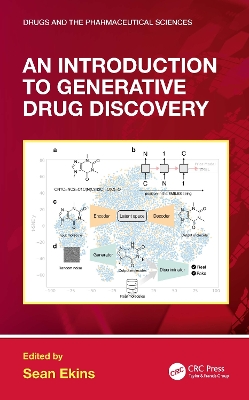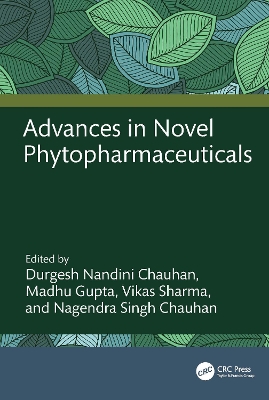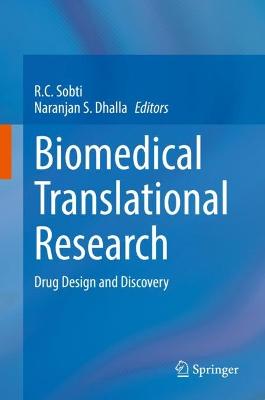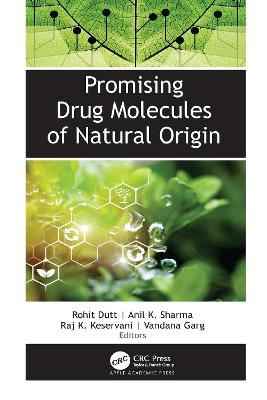RNA-Seq in Drug Discovery and Development
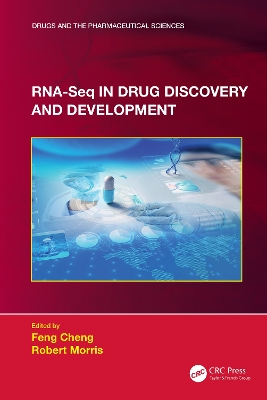 portes grátis
portes grátis
RNA-Seq in Drug Discovery and Development
Cheng, Feng; Morris, Robert
Taylor & Francis Ltd
12/2024
266
Mole
9781032004099
Pré-lançamento - envio 15 a 20 dias após a sua edição
Descrição não disponível.
Chapter 1: Introduction to RNA-Sequencing and Quality Control
1.1: What is RNA-Sequencing?
1.2. Overview of RNA-sequencing
1.2.1. Isolation of the RNA and RNA quality check
1.2.2 Selection and depletion of particular RNA
1.2.3 Fragmentation
1.2.4 Reverse transcription to generate cDNA and adaptor sequences
1.2.5 Single-end and Pair-end Sequencing
1.3. RNA-seq Sequencing techniques:
1.3.1 Roche 454
1.3.2 Illumina platform
1.3.3 Small-scale RNA-seq platform
1.4. RNA-seq file format
1.4.1 Output file: Fastq file
1.4.2 Mapped file: SAM/BAM/BIGWIG formats
1.4.3 GTF file
1.4.4 BED File
1.5. Quality control of RNA-seq Data
1.5.1 Basic Usage of the Public Server Galaxy
1.5.2 FastQC program
1.6. Advantages of RNA-seq over microarrays
1.7. Summary
Chapter 2: Read Alignment and Transcriptome Assembly
2. Introduction
2.1 Transcriptome Assembly Methodology
2.1.1 De novo assembly
2.2 Genome-guided Assembly
2.2.1 Unspliced Aligners: Burrows-Wheeler Transform (BWT)
2.2.2 Unspliced Aligners: Seed Methods
2.3 Spliced Aligners
2.3.1 TopHat
2.3.2 HISAT2
2.3.3 STAR
2.4 Summary
Chapter 3: Normalization and Downstream Analyses
3.1 Introduction
3.2 Quantification of Transcript Abundance
3.3 Raw Counts Extraction
3.3.1 Rsubread and featurecounts
3.3.2 Normalization Methods
3.4 Differential gene expression analysis
3.4.1 DESeq2
3.4.2 EdgeR
3.4.3 Ballgown
3.5. Visualization of differential expression
3.5.1 Integrative Genomics Viewer (IGV)
3.5.2 UCSC Genome Browser
3.5.3 Heatmaps
3.5.4 Volcano Plots
3.5.5 DAVID Pathway Analysis
3.6. Summary
Chapter 4: Constitutive and Alternative Splicing Events
4.1. Introduction to RNA splicing
4.1.1 What is splicing?
4.1.2 Molecular mechanism of splicing
4.1.3 Alternative Splicing
4.2. Differential splicing analysis
4.2.1 Cuffdiff 2
4.2.2 DiffSplice
4.2.3 DEXSeq
4.2.4 edgeR
4.2.5 LIMMA
4.3. Summary
Chapter 5: The role of transcriptomics in identifying fusion genes and chimeric RNAs in cancer
5.1 Introduction to fusion genes
5.1.1 What is a fusion gene?
5.1.2 Mechanisms that generate new fusion genes
5.1.3 Fusion RNA transcripts
5.1.4 The connection between fusion genes and non-coding RNAs
5.2 Detection methods for identification of fusion genes and chimeric proteins
5.2.1 Guided detection approaches
5.2.2 High-throughput sequencing-based detection methods
5.3 Summary
Chapter 6: MiRNA and RNA-seq
6.1 Non-coding RNAs
6.2 MiRNAs
6.3 LncRNAs
6.4 miRDeep2
6.5 Applications
6.6 Summary
Chapter 7: Toxicogenomics and RNA-seq
7.1 Introduction of toxicity
7.1.1 Traditional toxicity study
7.2 Toxicogenomics
7.2.1 What is Toxicogenomics?
7.2.2 Advantages: Mechanisms and predictive toxicology
7.2.3 Mechanisms of toxicity:
7.2.4 Limitations of toxicogenomics:
7.3 Methods for toxicogenomics data analysis
7.3.1 Identification of Differentially expressed genes
7.3.2 Signature matching
7.3.3 Gene Networks
7.3.4 Co-expression networks
7.4 Toxicogenomics databases
7.4.1 Comparative Toxicogenomics Database (CTD)
7.4.2 Japanese Toxicogenomics Project (TGP)
7.4.3 DrugMatrix
7.5 Comparing microarray vs. RNA-seq
7.6 Summary
Chapter 8: Drug Discovery and Traditional Medicine
8.1 Introduction
8.2 What is herbal medicine?
8.2.1 Traditional medicine
8.2.2 Herbal medicine
8.2.3 Use of database for bioactive compound example
8.2.4 Properties of candidate herbal compounds
8.2.5 RNA-seq and herbal medicine
8.3 Mining functional genes of medicinal plants
8.3.1 Mining functional genes of medicinal plants
8.3.2 Discovery of secondary metabolites and their metabolic pathways
8.3.3 Discovery of developmental mechanisms
8.3.4 Development of molecular markers to improve plant breeding
8.3.5 Identification of target genes and molecular mechanisms of herbal drugs
8.3.6 Synergism of herbal compounds in pathway regulation
8.3.7 Herbal medicine toxicity
8.3.8 Natural drug repurposing
8.4 Summary
Chapter 9: Single-Cell RNA-sequencing
9. Introduction to single-cell sequencing
9.1 Microdroplet approaches to cell capture
9.2 Non-microfluidic approaches to cell capture
9.3 Single-cell processing: Cell Ranger
9.4 STARsolo
9.5 DropletUtils
9.6 Seurat
9.7 Limitations
9.8 Applications
9.9 Summary
1.1: What is RNA-Sequencing?
1.2. Overview of RNA-sequencing
1.2.1. Isolation of the RNA and RNA quality check
1.2.2 Selection and depletion of particular RNA
1.2.3 Fragmentation
1.2.4 Reverse transcription to generate cDNA and adaptor sequences
1.2.5 Single-end and Pair-end Sequencing
1.3. RNA-seq Sequencing techniques:
1.3.1 Roche 454
1.3.2 Illumina platform
1.3.3 Small-scale RNA-seq platform
1.4. RNA-seq file format
1.4.1 Output file: Fastq file
1.4.2 Mapped file: SAM/BAM/BIGWIG formats
1.4.3 GTF file
1.4.4 BED File
1.5. Quality control of RNA-seq Data
1.5.1 Basic Usage of the Public Server Galaxy
1.5.2 FastQC program
1.6. Advantages of RNA-seq over microarrays
1.7. Summary
Chapter 2: Read Alignment and Transcriptome Assembly
2. Introduction
2.1 Transcriptome Assembly Methodology
2.1.1 De novo assembly
2.2 Genome-guided Assembly
2.2.1 Unspliced Aligners: Burrows-Wheeler Transform (BWT)
2.2.2 Unspliced Aligners: Seed Methods
2.3 Spliced Aligners
2.3.1 TopHat
2.3.2 HISAT2
2.3.3 STAR
2.4 Summary
Chapter 3: Normalization and Downstream Analyses
3.1 Introduction
3.2 Quantification of Transcript Abundance
3.3 Raw Counts Extraction
3.3.1 Rsubread and featurecounts
3.3.2 Normalization Methods
3.4 Differential gene expression analysis
3.4.1 DESeq2
3.4.2 EdgeR
3.4.3 Ballgown
3.5. Visualization of differential expression
3.5.1 Integrative Genomics Viewer (IGV)
3.5.2 UCSC Genome Browser
3.5.3 Heatmaps
3.5.4 Volcano Plots
3.5.5 DAVID Pathway Analysis
3.6. Summary
Chapter 4: Constitutive and Alternative Splicing Events
4.1. Introduction to RNA splicing
4.1.1 What is splicing?
4.1.2 Molecular mechanism of splicing
4.1.3 Alternative Splicing
4.2. Differential splicing analysis
4.2.1 Cuffdiff 2
4.2.2 DiffSplice
4.2.3 DEXSeq
4.2.4 edgeR
4.2.5 LIMMA
4.3. Summary
Chapter 5: The role of transcriptomics in identifying fusion genes and chimeric RNAs in cancer
5.1 Introduction to fusion genes
5.1.1 What is a fusion gene?
5.1.2 Mechanisms that generate new fusion genes
5.1.3 Fusion RNA transcripts
5.1.4 The connection between fusion genes and non-coding RNAs
5.2 Detection methods for identification of fusion genes and chimeric proteins
5.2.1 Guided detection approaches
5.2.2 High-throughput sequencing-based detection methods
5.3 Summary
Chapter 6: MiRNA and RNA-seq
6.1 Non-coding RNAs
6.2 MiRNAs
6.3 LncRNAs
6.4 miRDeep2
6.5 Applications
6.6 Summary
Chapter 7: Toxicogenomics and RNA-seq
7.1 Introduction of toxicity
7.1.1 Traditional toxicity study
7.2 Toxicogenomics
7.2.1 What is Toxicogenomics?
7.2.2 Advantages: Mechanisms and predictive toxicology
7.2.3 Mechanisms of toxicity:
7.2.4 Limitations of toxicogenomics:
7.3 Methods for toxicogenomics data analysis
7.3.1 Identification of Differentially expressed genes
7.3.2 Signature matching
7.3.3 Gene Networks
7.3.4 Co-expression networks
7.4 Toxicogenomics databases
7.4.1 Comparative Toxicogenomics Database (CTD)
7.4.2 Japanese Toxicogenomics Project (TGP)
7.4.3 DrugMatrix
7.5 Comparing microarray vs. RNA-seq
7.6 Summary
Chapter 8: Drug Discovery and Traditional Medicine
8.1 Introduction
8.2 What is herbal medicine?
8.2.1 Traditional medicine
8.2.2 Herbal medicine
8.2.3 Use of database for bioactive compound example
8.2.4 Properties of candidate herbal compounds
8.2.5 RNA-seq and herbal medicine
8.3 Mining functional genes of medicinal plants
8.3.1 Mining functional genes of medicinal plants
8.3.2 Discovery of secondary metabolites and their metabolic pathways
8.3.3 Discovery of developmental mechanisms
8.3.4 Development of molecular markers to improve plant breeding
8.3.5 Identification of target genes and molecular mechanisms of herbal drugs
8.3.6 Synergism of herbal compounds in pathway regulation
8.3.7 Herbal medicine toxicity
8.3.8 Natural drug repurposing
8.4 Summary
Chapter 9: Single-Cell RNA-sequencing
9. Introduction to single-cell sequencing
9.1 Microdroplet approaches to cell capture
9.2 Non-microfluidic approaches to cell capture
9.3 Single-cell processing: Cell Ranger
9.4 STARsolo
9.5 DropletUtils
9.6 Seurat
9.7 Limitations
9.8 Applications
9.9 Summary
Este título pertence ao(s) assunto(s) indicados(s). Para ver outros títulos clique no assunto desejado.
RNA-seQ;Drug discovery;Drug development;Personalized medicine;Toxicogenomics;Pharmaceutical science;Reference Genome;Paired End Reads;Bam Files;FASTQ File;Splice Junctions;Significant DE Gene;De Bruijn Graphs;Chimeric Transcripts;BAM File;DE;Split Reads;UCSC Genome Browser;Single Cell RNA Sequencing;RNA Seq Experiment;De Novo Assembly;Constitutive Splicing;DE Gene;Mature miRNA;Fusion Genes;RNA Pol II;WGCNA;Overdispersed Poisson Distribution;Co-expression Networks;Splice Sites;Weak Splice Sites
Chapter 1: Introduction to RNA-Sequencing and Quality Control
1.1: What is RNA-Sequencing?
1.2. Overview of RNA-sequencing
1.2.1. Isolation of the RNA and RNA quality check
1.2.2 Selection and depletion of particular RNA
1.2.3 Fragmentation
1.2.4 Reverse transcription to generate cDNA and adaptor sequences
1.2.5 Single-end and Pair-end Sequencing
1.3. RNA-seq Sequencing techniques:
1.3.1 Roche 454
1.3.2 Illumina platform
1.3.3 Small-scale RNA-seq platform
1.4. RNA-seq file format
1.4.1 Output file: Fastq file
1.4.2 Mapped file: SAM/BAM/BIGWIG formats
1.4.3 GTF file
1.4.4 BED File
1.5. Quality control of RNA-seq Data
1.5.1 Basic Usage of the Public Server Galaxy
1.5.2 FastQC program
1.6. Advantages of RNA-seq over microarrays
1.7. Summary
Chapter 2: Read Alignment and Transcriptome Assembly
2. Introduction
2.1 Transcriptome Assembly Methodology
2.1.1 De novo assembly
2.2 Genome-guided Assembly
2.2.1 Unspliced Aligners: Burrows-Wheeler Transform (BWT)
2.2.2 Unspliced Aligners: Seed Methods
2.3 Spliced Aligners
2.3.1 TopHat
2.3.2 HISAT2
2.3.3 STAR
2.4 Summary
Chapter 3: Normalization and Downstream Analyses
3.1 Introduction
3.2 Quantification of Transcript Abundance
3.3 Raw Counts Extraction
3.3.1 Rsubread and featurecounts
3.3.2 Normalization Methods
3.4 Differential gene expression analysis
3.4.1 DESeq2
3.4.2 EdgeR
3.4.3 Ballgown
3.5. Visualization of differential expression
3.5.1 Integrative Genomics Viewer (IGV)
3.5.2 UCSC Genome Browser
3.5.3 Heatmaps
3.5.4 Volcano Plots
3.5.5 DAVID Pathway Analysis
3.6. Summary
Chapter 4: Constitutive and Alternative Splicing Events
4.1. Introduction to RNA splicing
4.1.1 What is splicing?
4.1.2 Molecular mechanism of splicing
4.1.3 Alternative Splicing
4.2. Differential splicing analysis
4.2.1 Cuffdiff 2
4.2.2 DiffSplice
4.2.3 DEXSeq
4.2.4 edgeR
4.2.5 LIMMA
4.3. Summary
Chapter 5: The role of transcriptomics in identifying fusion genes and chimeric RNAs in cancer
5.1 Introduction to fusion genes
5.1.1 What is a fusion gene?
5.1.2 Mechanisms that generate new fusion genes
5.1.3 Fusion RNA transcripts
5.1.4 The connection between fusion genes and non-coding RNAs
5.2 Detection methods for identification of fusion genes and chimeric proteins
5.2.1 Guided detection approaches
5.2.2 High-throughput sequencing-based detection methods
5.3 Summary
Chapter 6: MiRNA and RNA-seq
6.1 Non-coding RNAs
6.2 MiRNAs
6.3 LncRNAs
6.4 miRDeep2
6.5 Applications
6.6 Summary
Chapter 7: Toxicogenomics and RNA-seq
7.1 Introduction of toxicity
7.1.1 Traditional toxicity study
7.2 Toxicogenomics
7.2.1 What is Toxicogenomics?
7.2.2 Advantages: Mechanisms and predictive toxicology
7.2.3 Mechanisms of toxicity:
7.2.4 Limitations of toxicogenomics:
7.3 Methods for toxicogenomics data analysis
7.3.1 Identification of Differentially expressed genes
7.3.2 Signature matching
7.3.3 Gene Networks
7.3.4 Co-expression networks
7.4 Toxicogenomics databases
7.4.1 Comparative Toxicogenomics Database (CTD)
7.4.2 Japanese Toxicogenomics Project (TGP)
7.4.3 DrugMatrix
7.5 Comparing microarray vs. RNA-seq
7.6 Summary
Chapter 8: Drug Discovery and Traditional Medicine
8.1 Introduction
8.2 What is herbal medicine?
8.2.1 Traditional medicine
8.2.2 Herbal medicine
8.2.3 Use of database for bioactive compound example
8.2.4 Properties of candidate herbal compounds
8.2.5 RNA-seq and herbal medicine
8.3 Mining functional genes of medicinal plants
8.3.1 Mining functional genes of medicinal plants
8.3.2 Discovery of secondary metabolites and their metabolic pathways
8.3.3 Discovery of developmental mechanisms
8.3.4 Development of molecular markers to improve plant breeding
8.3.5 Identification of target genes and molecular mechanisms of herbal drugs
8.3.6 Synergism of herbal compounds in pathway regulation
8.3.7 Herbal medicine toxicity
8.3.8 Natural drug repurposing
8.4 Summary
Chapter 9: Single-Cell RNA-sequencing
9. Introduction to single-cell sequencing
9.1 Microdroplet approaches to cell capture
9.2 Non-microfluidic approaches to cell capture
9.3 Single-cell processing: Cell Ranger
9.4 STARsolo
9.5 DropletUtils
9.6 Seurat
9.7 Limitations
9.8 Applications
9.9 Summary
1.1: What is RNA-Sequencing?
1.2. Overview of RNA-sequencing
1.2.1. Isolation of the RNA and RNA quality check
1.2.2 Selection and depletion of particular RNA
1.2.3 Fragmentation
1.2.4 Reverse transcription to generate cDNA and adaptor sequences
1.2.5 Single-end and Pair-end Sequencing
1.3. RNA-seq Sequencing techniques:
1.3.1 Roche 454
1.3.2 Illumina platform
1.3.3 Small-scale RNA-seq platform
1.4. RNA-seq file format
1.4.1 Output file: Fastq file
1.4.2 Mapped file: SAM/BAM/BIGWIG formats
1.4.3 GTF file
1.4.4 BED File
1.5. Quality control of RNA-seq Data
1.5.1 Basic Usage of the Public Server Galaxy
1.5.2 FastQC program
1.6. Advantages of RNA-seq over microarrays
1.7. Summary
Chapter 2: Read Alignment and Transcriptome Assembly
2. Introduction
2.1 Transcriptome Assembly Methodology
2.1.1 De novo assembly
2.2 Genome-guided Assembly
2.2.1 Unspliced Aligners: Burrows-Wheeler Transform (BWT)
2.2.2 Unspliced Aligners: Seed Methods
2.3 Spliced Aligners
2.3.1 TopHat
2.3.2 HISAT2
2.3.3 STAR
2.4 Summary
Chapter 3: Normalization and Downstream Analyses
3.1 Introduction
3.2 Quantification of Transcript Abundance
3.3 Raw Counts Extraction
3.3.1 Rsubread and featurecounts
3.3.2 Normalization Methods
3.4 Differential gene expression analysis
3.4.1 DESeq2
3.4.2 EdgeR
3.4.3 Ballgown
3.5. Visualization of differential expression
3.5.1 Integrative Genomics Viewer (IGV)
3.5.2 UCSC Genome Browser
3.5.3 Heatmaps
3.5.4 Volcano Plots
3.5.5 DAVID Pathway Analysis
3.6. Summary
Chapter 4: Constitutive and Alternative Splicing Events
4.1. Introduction to RNA splicing
4.1.1 What is splicing?
4.1.2 Molecular mechanism of splicing
4.1.3 Alternative Splicing
4.2. Differential splicing analysis
4.2.1 Cuffdiff 2
4.2.2 DiffSplice
4.2.3 DEXSeq
4.2.4 edgeR
4.2.5 LIMMA
4.3. Summary
Chapter 5: The role of transcriptomics in identifying fusion genes and chimeric RNAs in cancer
5.1 Introduction to fusion genes
5.1.1 What is a fusion gene?
5.1.2 Mechanisms that generate new fusion genes
5.1.3 Fusion RNA transcripts
5.1.4 The connection between fusion genes and non-coding RNAs
5.2 Detection methods for identification of fusion genes and chimeric proteins
5.2.1 Guided detection approaches
5.2.2 High-throughput sequencing-based detection methods
5.3 Summary
Chapter 6: MiRNA and RNA-seq
6.1 Non-coding RNAs
6.2 MiRNAs
6.3 LncRNAs
6.4 miRDeep2
6.5 Applications
6.6 Summary
Chapter 7: Toxicogenomics and RNA-seq
7.1 Introduction of toxicity
7.1.1 Traditional toxicity study
7.2 Toxicogenomics
7.2.1 What is Toxicogenomics?
7.2.2 Advantages: Mechanisms and predictive toxicology
7.2.3 Mechanisms of toxicity:
7.2.4 Limitations of toxicogenomics:
7.3 Methods for toxicogenomics data analysis
7.3.1 Identification of Differentially expressed genes
7.3.2 Signature matching
7.3.3 Gene Networks
7.3.4 Co-expression networks
7.4 Toxicogenomics databases
7.4.1 Comparative Toxicogenomics Database (CTD)
7.4.2 Japanese Toxicogenomics Project (TGP)
7.4.3 DrugMatrix
7.5 Comparing microarray vs. RNA-seq
7.6 Summary
Chapter 8: Drug Discovery and Traditional Medicine
8.1 Introduction
8.2 What is herbal medicine?
8.2.1 Traditional medicine
8.2.2 Herbal medicine
8.2.3 Use of database for bioactive compound example
8.2.4 Properties of candidate herbal compounds
8.2.5 RNA-seq and herbal medicine
8.3 Mining functional genes of medicinal plants
8.3.1 Mining functional genes of medicinal plants
8.3.2 Discovery of secondary metabolites and their metabolic pathways
8.3.3 Discovery of developmental mechanisms
8.3.4 Development of molecular markers to improve plant breeding
8.3.5 Identification of target genes and molecular mechanisms of herbal drugs
8.3.6 Synergism of herbal compounds in pathway regulation
8.3.7 Herbal medicine toxicity
8.3.8 Natural drug repurposing
8.4 Summary
Chapter 9: Single-Cell RNA-sequencing
9. Introduction to single-cell sequencing
9.1 Microdroplet approaches to cell capture
9.2 Non-microfluidic approaches to cell capture
9.3 Single-cell processing: Cell Ranger
9.4 STARsolo
9.5 DropletUtils
9.6 Seurat
9.7 Limitations
9.8 Applications
9.9 Summary
Este título pertence ao(s) assunto(s) indicados(s). Para ver outros títulos clique no assunto desejado.
RNA-seQ;Drug discovery;Drug development;Personalized medicine;Toxicogenomics;Pharmaceutical science;Reference Genome;Paired End Reads;Bam Files;FASTQ File;Splice Junctions;Significant DE Gene;De Bruijn Graphs;Chimeric Transcripts;BAM File;DE;Split Reads;UCSC Genome Browser;Single Cell RNA Sequencing;RNA Seq Experiment;De Novo Assembly;Constitutive Splicing;DE Gene;Mature miRNA;Fusion Genes;RNA Pol II;WGCNA;Overdispersed Poisson Distribution;Co-expression Networks;Splice Sites;Weak Splice Sites


